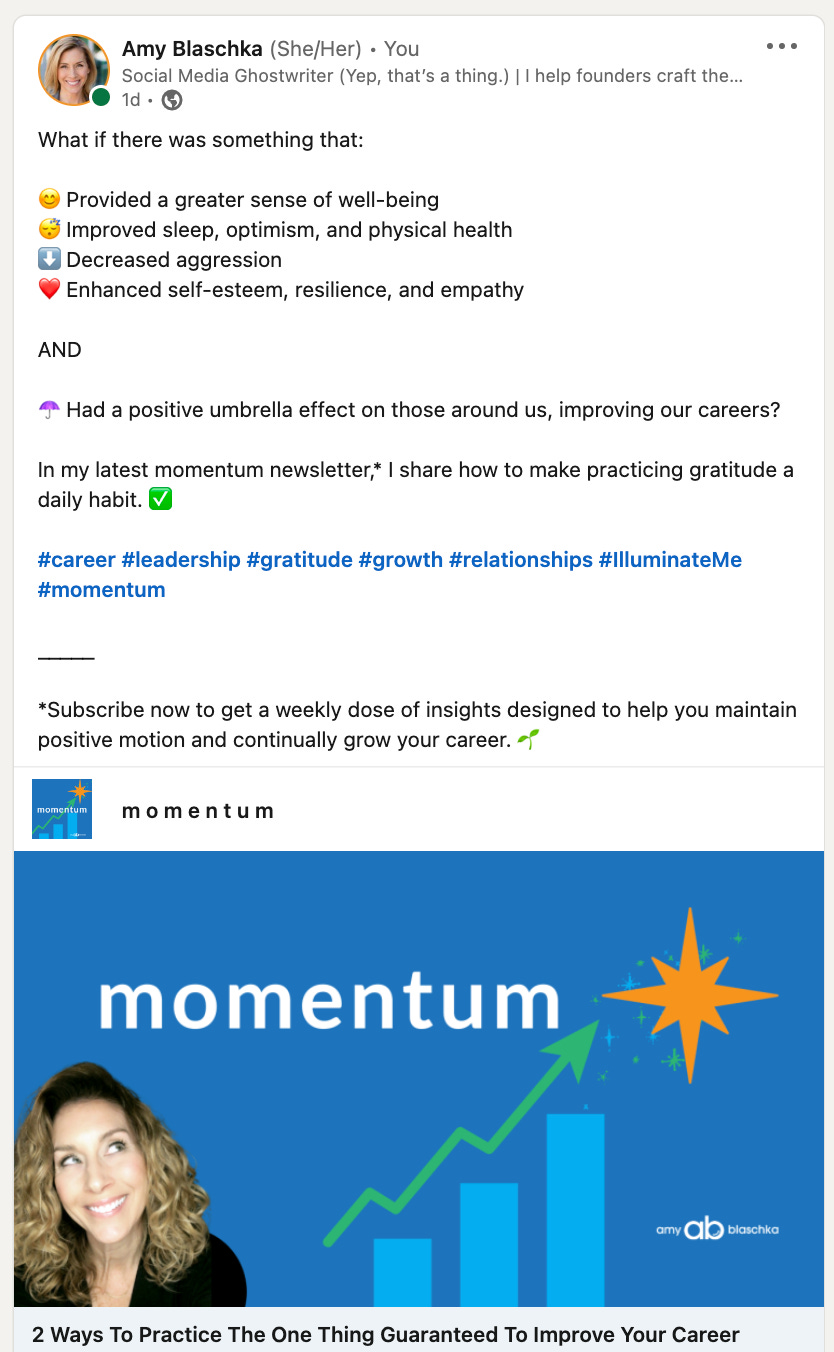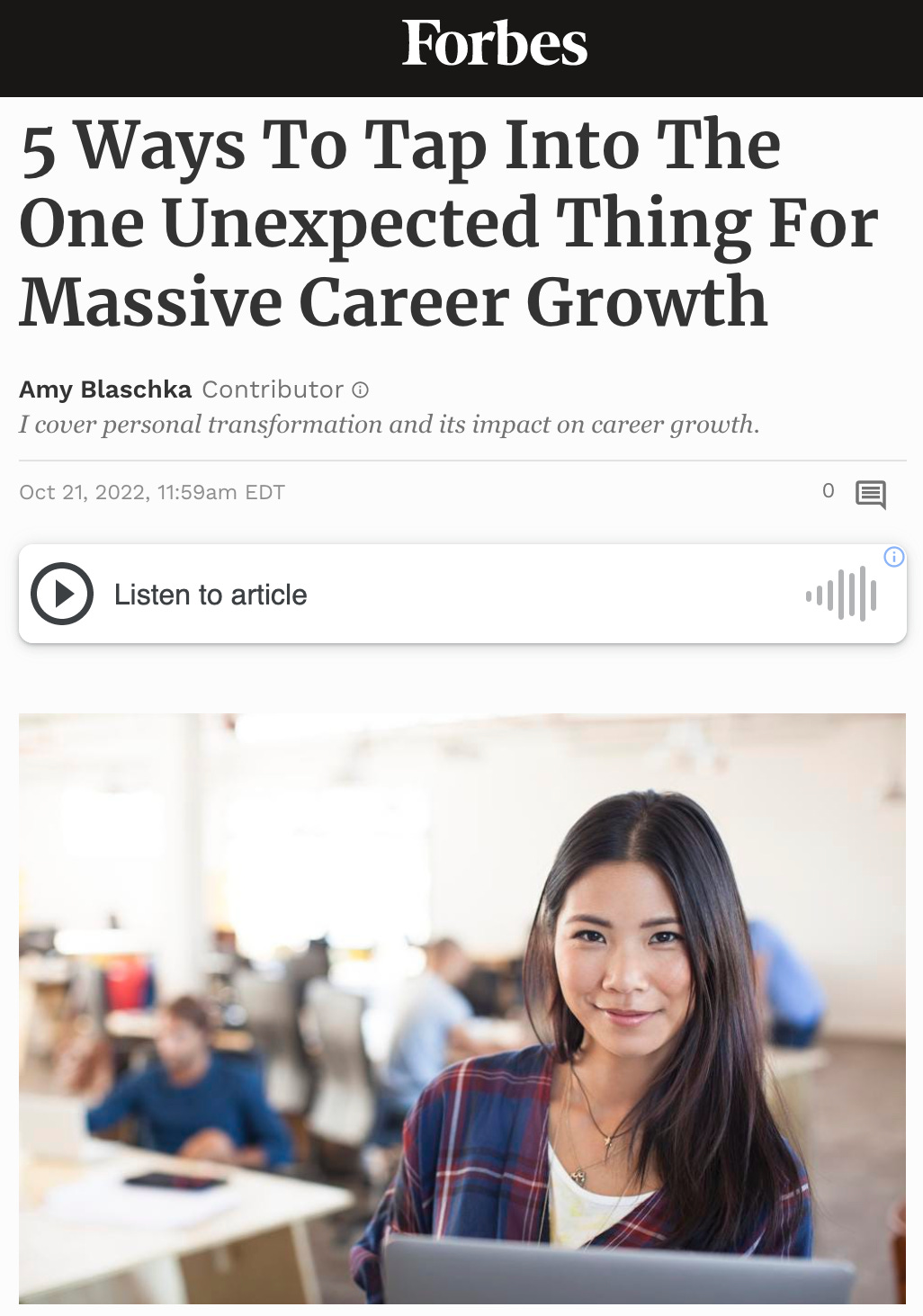Weird fact: My lime green sweatshirt is the MVP of my wardrobe.
Well, at least it was during a recent multi-country vacation, where I must have worn that thing a dozen times.
What’s funny is that while it felt like I was constantly wearing it because I was so used to it, to others, it always presented as something new simply because I repurposed it with different elements.
And there’s tremendous value in that, especially when you apply the same concept to your content.
Repurposing it is a smart option for many reasons:
Repeating your core themes and messages helps others attribute them back to you (read: personal branding and thought leadership boost)
People need to see something a few times to take it in
People learn in different ways; some prefer reading written formats (like you, my coruscant readers), some like listening to audio, others would rather peep an infographic, and some dig videos (with captions) so they can see, hear, and read info simultaneously
It gives you more quality content to share regularly
It saves you time (<— that’s a biggie)
If you’re convinced but unsure where to start, don’t worry, boo; I got you.
Here’s a breakdown of my best tips and exactly how I repurpose my content:
(Side note: Settle into a comfy chair. This is an unusually long one, but it’s jam-packed with nuggets.)
Start with a piece of long-form content
When I say “long-form content,” I’m referring to something that has some meat: an article, newsletter, podcast, video interview, etc. This is where you’ll pull out and repurpose bits into other forms of content.
For instance, every week, I publish a long-form Forbes article that I share publicly on Mondays (and give first dibs to you fabulous readers on Sunday mornings).
Here’s one from the May 8th It’s the little things issue of my newsletter:
Pro tip: “Evergreen” content — content not tied to a current event — has the longest legs and can be shared days, months, weeks, and even years later, provided it still offers value and reflects your current perspective. For this reason, most of my content is evergreen, with a few specific, time-sensitive pieces.
Then change the format, keep the message
On a Tuesday, a few months after publishing a Forbes article, I used to share an infographic and summary text that breaks down the main idea and takeaways of the article.
Taking that a step further, I now create a multi-page, downloadable PDF for LinkedIn, which I repurpose as a deck on Instagram, and share each page as part of a Twitter thread.
And on a Wednesday, about a month after, I’ll share the content in my LinkedIn newsletter, m o m e n t u m.
I posted this one earlier this week:
Another example: On Thursdays, I share #ThursdayThoughts, quick, easily digestible (and immediately actionable) bits of wisdom.
Typically, they’ve been infographics like this:
But I wanted to mix up the format for some of the themes that previously resonated most, so I created a video version of the example above and shared it this week:
Same medium, new presentation
You can also change things up in the same medium by presenting information in a new way, such as creating what’s known as a “roundup” article where you take the best of other articles and incorporate that information into a list within one piece, like this:
Use it to promote new content
I publish this newsletter on Sundays but share a graphic teaser the Friday before with a visual of the title and text about the key takeaway.
I call it a teaser because I always “tease” out the extra value as a call to action to subscribe and provide a link in the comments.
Here’s what it looked like for last week’s issue:
How you present your content is just as important as what you share
You can share (or repurpose) the most insightful content, but people will keep scrolling if it’s hard to understand.
The biggest no-no?
A lack of white space.
Far too often, I see people share huge blocks of text. Yes, I know they’re probably following what they learned years ago about constructing essays, but in the online world, people decide if they want to give you their attention based on your ability to pull out the big idea and hook them in.
Plus, lots of folks read on their phones, so what looks like a short paragraph on your laptop could appear as a never-ending text block to them.
No bueno.
People skim before they read, so make it easy for them to keep going.
Make white space your friend. This doesn’t mean that you need to have a line break after every sentence, but try to keep a cadence of one line, then three to five lines, then a single line again.
Visually, this is easier to digest, and it will draw others in.
And speaking of all things visual…
Make sure your visuals are working for (and not against) you
If you include a visual element in your content, I highly encourage you to be intentional about it.
Long gone are the days when only stock images and crappy fonts were available. Today, you don’t need to be a designer to develop beautiful, impactful visuals; you need a great tool. And my absolute favorite one for creating all my branded graphics is Canva.
It’s easy to use and comes preloaded with tons of templates, graphics, fonts, and formats. And once you create something you love, you can make a copy of that graphic to tweak and create something new (its own version of repurposing). I use the paid version, but the free version is a great place to start.
Pro tip: Keep your graphics consistent in look and feel by sticking to one color palette, format style, and set of fonts. The payoff for your consistency and discipline is excellent awareness of your personal brand and content before someone even reads it.
Find a way to organize your content
It’s easy to be overwhelmed and disorganized without some structure. I highly recommend creating a content calendar to map out your content in advance and track its level of engagement (views/clicks, reactions, comments, shares, etc.) with your audience. Though you can get fancy, I use a Google Sheet for this that I update daily. I’m a visual person, so I like to color code mine by format and review it periodically to see what themes resonate most.
What you’ll find most helpful is being able to schedule what you’ll post and when. I do this in advance, highlighting in yellow the pieces I have to create.
Stuck on content ideas? Use your audience
If you’ve done what I’ve suggested above and created a content calendar to track your work, you should have a good idea of what resonates most with your audience (and what does not). Then, use those insights to double down on those topics and themes, exploring them in a new way.
You can also ask your audience what they’d like to hear from you using a LinkedIn or Twitter poll, or if you have a mailing list, by surveying them using a tool like SurveyMonkey.
Another idea is to do an AMA, or “ask me anything,” where you invite your followers to submit questions. You answer queries in whatever format you’d like, as Q&As are flexible. The first time I did this was through an #AskAmy video series. It was so well-received that I decided to do a second round. Here’s an example:

Timesaver: Batch your content creation
Remember how I said I highlighted those pieces I needed to create in yellow on my content calendar? That reminds me of what I need to do to group them for development.
I rarely create one piece of content in a sitting. For example, I make the accompanying infographic, deck, Twitter thread, and summary text immediately after writing a Forbes article. Also closely linked in theme to that Forbes article will be this newsletter, which I craft around the same time. And when I script, shoot, and edit my video content, I typically do two or more at a time.
For me, it’s easiest to block out dedicated time to batch content creation. This helps me focus on the task at hand and feel like I’m ahead of the game rather than scrambling to get something done — never the ideal mindset for creation.
Another thing that’s less than ideal?
Not making progress in your career.
To avoid that, try tapping into the unexpected power of cross-pollination.
In my latest Forbes article, I share five ways you can.
Shine on,
Amy
P.S. When I’m not writing this newsletter or repurposing sweatshirts and content on purpose, I’m a social media ghostwriter. (Yep, that’s a thing). I help founders craft their stories to communicate and connect better, magnifying their reach and impact. (Think personal branding and thought leadership.) Learn more here.
P.P.S. Now that we’re inbox-exclusive (love that about us!), why not follow my musings across the interwebs on Forbes, LinkedIn (be sure to hit the 🔔 in the top right corner of my profile to get notified when I post!), Twitter, and Instagram too?
And if you really want to get meta, subscribe to my weekly LinkedIn newsletter, m o m e n t u m, featuring insights to help you maintain positive motion and continually grow your career.
P.P.P.S. You have great taste in newsletters, my friend—thanks for subscribing! You are subscribed, right? If not, let’s fix that; click the blue button.












